Aerodynamic Performance of an Adaptive GFRP Wind Barrier Structure for Railway Bridges
Abstract
:1. Introduction
2. Material Properties of GFRP
3. Wind Tunnel Experiments
3.1. Experimental Setup and Procedure
3.2. Aerodynamic Coefficients
4. Modelling of the Train–Barrier–Bridge System
4.1. Modelling Assumptions and Geometries
4.2. Meshing and Boundary Conditions
5. Experimental and Numerical Results
5.1. Deformation of the Wind Barrier Due to a Crosswind
5.2. Effects of the Presence and Location of the Train
5.3. Effects of the Barrier Height and the Airflow Speed on the Aerodynamic Coefficients of the Train
5.4. Effects of the Barrier Height and Airflow Speed on the Aerodynamic Coefficients of the Bridge
5.5. Results from the Reduced- and Full-Scale Modelling
6. Conclusions
- The proposed wind barriers made from GFRP composites showed adaptive bending deformation when subjected to crosswind and more significant lateral deformation was seen with higher airflow speeds. Based on the results from the wind tunnel experiments, it can be seen that when the train was on the windward side on the bridge, both the train and the bridge were associated with a higher side-force and overturning-moment coefficients in comparison to the scenarios with the train in the leeward side or absent. For example, with a constant airflow speed of 10 m/s and a barrier height of 10 cm, the overturning-moment coefficient for the bridge (CBM) was 0.162 when the train was on the windward side, while it became less than 0.148 for the other two scenarios.
- The wind tunnel experiments further showed that a wind barrier taller than 10 cm reduced the overturning-moment coefficient (CTM) of the train from 0.41 (without the wind barrier) to be less than 0.08, and reduced the side-force coefficient (CTY) of the train from 0.57 (without the wind barrier) to be less than 0.19. Therefore, the transfer of the wind load to the train could be effectively mitigated in this way. The values of CTM and CTY were not noticeably decreased when the barrier height was further increased from 10 cm to 13.5 cm. This suggests there may be an optimal height for the proposed wind barrier in terms of the aerodynamic performance of the train. Furthermore, when different airflow speed levels from 5 to 20 m/s were applied, the variations of CTM and CTY were insignificant, for example, within 10.5% for the former and 9.4% for the latter when the barrier height was 8 cm.
- The wind tunnel experiments also indicated that for an airflow speed over 10 m/s, the proposed wind barrier increased the overturning-moment coefficient (CBM) of the bridge from 0.02 (without the wind barrier) to 0.15 (8 cm wind barrier) and increased the side-force coefficient (CBY) of the bridge from 0.72 (no wind barrier) to 0.97 (8 cm wind barrier). Again, the effects of a change in the airflow speeds on CBY was minor, while CBM significantly decreased when the airflow speed rose from 10 to 20 m/s for all barrier heights applied. Such a decrease was more obvious for a taller barrier, for example, 9.4% for the 8 cm barrier and 25.2% for the 13.5 cm barrier. This was in association with the increases of deformation of the barriers with their heights and airflow speeds; therefore, the barrier with a larger deformation showed less resistance to wind and then transferred lower loads to the bridge.
- The results from the reduced-scale FE modelling were consistent with those from the wind tunnel experiments. The validated FE approach was used to develop the full-scale train–barrier–bridge system. The full-scale modelling results indicated that the change in CBY with airflow ranging from 5 to 20 m/s was not obvious, with a variation of only 4%. However, the decrease in the overturning-moment coefficient of the bridge, CBM, with the increase in the airflow speed was more prominent than the results from the wind tunnel experimental results. This suggests that the mitigation in the transfer of the wind load to the bridge by the proposed adaptive wind barrier was effective at the full scale in practice.
Author Contributions
Funding
Acknowledgments
Conflicts of Interest
Data Availability Statement
References
- Argentini, T.; Ozkan, E.; Rocchi, D.; Rosa, L. Cross-wind effects on a vehicle crossing the wake of a bridge pylon. J. Wind Eng. Ind. Aerodyn. 2011, 99, 734–740. [Google Scholar] [CrossRef]
- Chen, S.; Cai, C.S. Accident assessment of vehicles on long-span bridges in windy environments. J. Wind Eng. Ind. Aerodyn. 2004, 92, 991–1024. [Google Scholar] [CrossRef]
- Xu, Y.L.; Zhang, N.; Xia, H. Vibration of coupled train and cable-stayed bridge systems in cross winds. Eng. Struct. 2004, 26, 1389–1406. [Google Scholar] [CrossRef]
- Olmos, J.M.; Astiz, M.A. Improvement of the lateral dynamic response of a high pier viaduct under turbulent wind during the high-speed train travel. Eng. Struct. 2018, 165, 368–385. [Google Scholar] [CrossRef]
- Kwon, S.; Kim, D.H.; Lee, S.H.; Song, H. Design criteria of wind barriers for traffic. Part 1: Wind barrier performance. Wind Struct. 2011, 14, 55–70. [Google Scholar] [CrossRef] [Green Version]
- Xiang, H.; Li, Y.; Chen, S.; Hou, G. Wind loads of moving vehicle on bridge with solid wind barrier. Eng. Struct. 2018, 156, 188–196. [Google Scholar] [CrossRef]
- Avila-Sanchez, S.; Lopez-Garcia, O.; Cuerva, A.; Meseguer, J. Characterisation of cross-flow above a railway bridge equipped with solid windbreaks. Eng. Struct. 2016, 126, 133–146. [Google Scholar] [CrossRef] [Green Version]
- He, X.; Zou, Y.; Wang, H.F.; Zou, Y.F.; Han, Y.; Shi, K. Aerodynamic characteristics of a trailing rail vehicles on viaduct based on still wind tunnel experiments. J. Wind Eng. Ind. Aerodyn. 2014, 135, 22–33. [Google Scholar] [CrossRef]
- Niu, J.; Zhou, D.; Liang, X.; Zhou, D. Experimental research on the aerodynamic characteristics of a high-speed train under different turbulence conditions. Exp. Therm. Fluid Sci. 2017, 80, 117–125. [Google Scholar] [CrossRef]
- He, X.; Shi, K.; Wu, T.; Zhou, Y.; Wang, H.; Qin, H. Aerodynamic performance of a novel wind barrier for train-bridge system. Wind Struct. 2016, 23, 171–189. [Google Scholar] [CrossRef]
- Liu, T.; Chen, Z.; Zhou, X.; Zhang, J. A CFD analysis of the aerodynamics of a high-speed train passing through a windbreak transition under crosswind. Eng. Appl. Comput. Fluid Mech. 2018, 12, 137–151. [Google Scholar] [CrossRef] [Green Version]
- Montenegro, P.A.; Calcada, R.; Carvalho, H.; Bolkovoy, A.; Chebykin, I. Stability of a train running over the Volga river high-speed railway bridge during crosswinds. Struct. Infrastruct. Eng. 2020, 16, 1121–1137. [Google Scholar] [CrossRef]
- Wang, M.; Li, X.; Xiao, J.; Zou, Q.-Y.; Sha, H.-Q. An experimental analysis of the aerodynamic characteristics of a high-speed train on a bridge under crosswinds. J. Wind Eng. Ind. Aerodyn. 2018, 177, 92–100. [Google Scholar] [CrossRef]
- Kozmar, H.; Procino, L.; Borsani, A.; I Bartoli, G. Optimizing height and porosity of roadway wind barriers for viaducts and bridges. Eng. Struct. 2014, 81, 49–61. [Google Scholar] [CrossRef]
- Zhang, T.; Guo, W.; Du, F. Effect of windproof barrier on aerodynamic performance of vehicle-bridge system. Procedia Eng. 2017, 199, 3083–3090. [Google Scholar] [CrossRef]
- He, X.; Fang, D.; Li, H.; Shi, K. Parameter optimization for improved aerodynamic performance of louver-type wind barrier for train-bridge system. J. Cent. South Univ. 2019, 26, 229–240. [Google Scholar] [CrossRef]
- Bank, L. Composites for Construction Structural Design with FRP Materials; John Wiley & Sons: Hoboken, NJ, USA, 2006. [Google Scholar]
- Beura, S.; Thatoi, D.N.; Chakraverty, A.P.; Mohanty, U.K. Impact of the ambiance on GFRP composites and role of some inherent factors: A review report. J. Reinf. Plast. Compos. 2018, 37, 533–547. [Google Scholar] [CrossRef]
- Keller, T.; Riebel, F.; Vallé, T. GFRP posts for railway noise barriers—Experimental validation of load-carrying performance and durability. Compos. Struct. 2008, 85, 116–125. [Google Scholar] [CrossRef]
- Buljac, A.; Kozmar, H.; Pospisil, S.; Macháček, M. Aerodynamic and Aeroelastic Characteristics of Typical Bridge Decks Equipped with Wind Barriers at the Windward Bridge-deck Edge. Eng. Struct. 2017, 137, 310–322. [Google Scholar] [CrossRef]
- Keller, T.; Schollmayer, M. Plate bending behavior of a pultruded GFRP bridge deck system. Compos. Struct. 2004, 64, 285–295. [Google Scholar] [CrossRef]
- Satasivam, S.; Bai, Y.; Yang, Y.; Zhu, L.; Zhao, X.L. Mechanical performance of two-way modular FRP sandwich slabs. Compos. Struct. 2018, 184, 904–916. [Google Scholar] [CrossRef]
- Gu, X.; Dai, Y.; Jiang, J. Flexural behavior investigation of steel-GFRP hybrid-reinforced concrete beams based on experimental and numerical methods. Eng. Struct. 2020, 206, 110117. [Google Scholar]
- Dai, Y.; Bai, Y.; Keller, T. Stress mitigation for adhesively bonded photovoltaics with fibre reinforced polymer composites in load carrying applications. Compos. Part B-Eng. 2019, 177, 107420. [Google Scholar] [CrossRef]
- ASTM Committee D-30 on Composite Materials. Standard Test Method for Tensile Properties of Polymer Matrix Composite Materials; ASTM D3039/D3039M-17; ASTM International: West Conshohocken, PA, USA, 2017. [Google Scholar]
- Bocciolone, M.; Cheli, F.; Corradi, R.; Muggiasca, S.; Tomasini, G. Crosswind action on rail vehicles: Wind tunnel experimental analyses. J. Wind Eng. Ind. Aerodyn. 2008, 96, 584–610. [Google Scholar] [CrossRef]
- Diedrichs, B. On computational fluid dynamics modelling of crosswind effects for high-speed rolling stock. Proc. Inst. Mech. Eng. Part F J. Rail Rapid Transit 2003, 217, 203–226. [Google Scholar] [CrossRef]
- Cheli, F.; Corradi, R.; Rocchi, D.; Tomasini, G.; Maestrini, E. Wind tunnel tests on train scale models to investigate the effect of infrastructure scenario. J. Wind Eng. Ind. Aerodyn. 2010, 98, 353–362. [Google Scholar] [CrossRef] [Green Version]
- Bell, J.R.; Burton, D.; Thompson, M.C.; Herbst, A.H.; Sheridan, J. Wind tunnel analysis of the slipstream and wake of a high-speed train. J. Wind Eng. Ind. Aerodyn. 2014, 134, 122–138. [Google Scholar] [CrossRef]
- Dorigatti, F.; Sterling, M.; Baker, C.J.; Quin, A.D. Crosswind effects on the stability of a model passenger train—A comparison of static and moving experiments. J. Wind Eng. Ind. Aerodyn. 2015, 138, 36–51. [Google Scholar] [CrossRef]
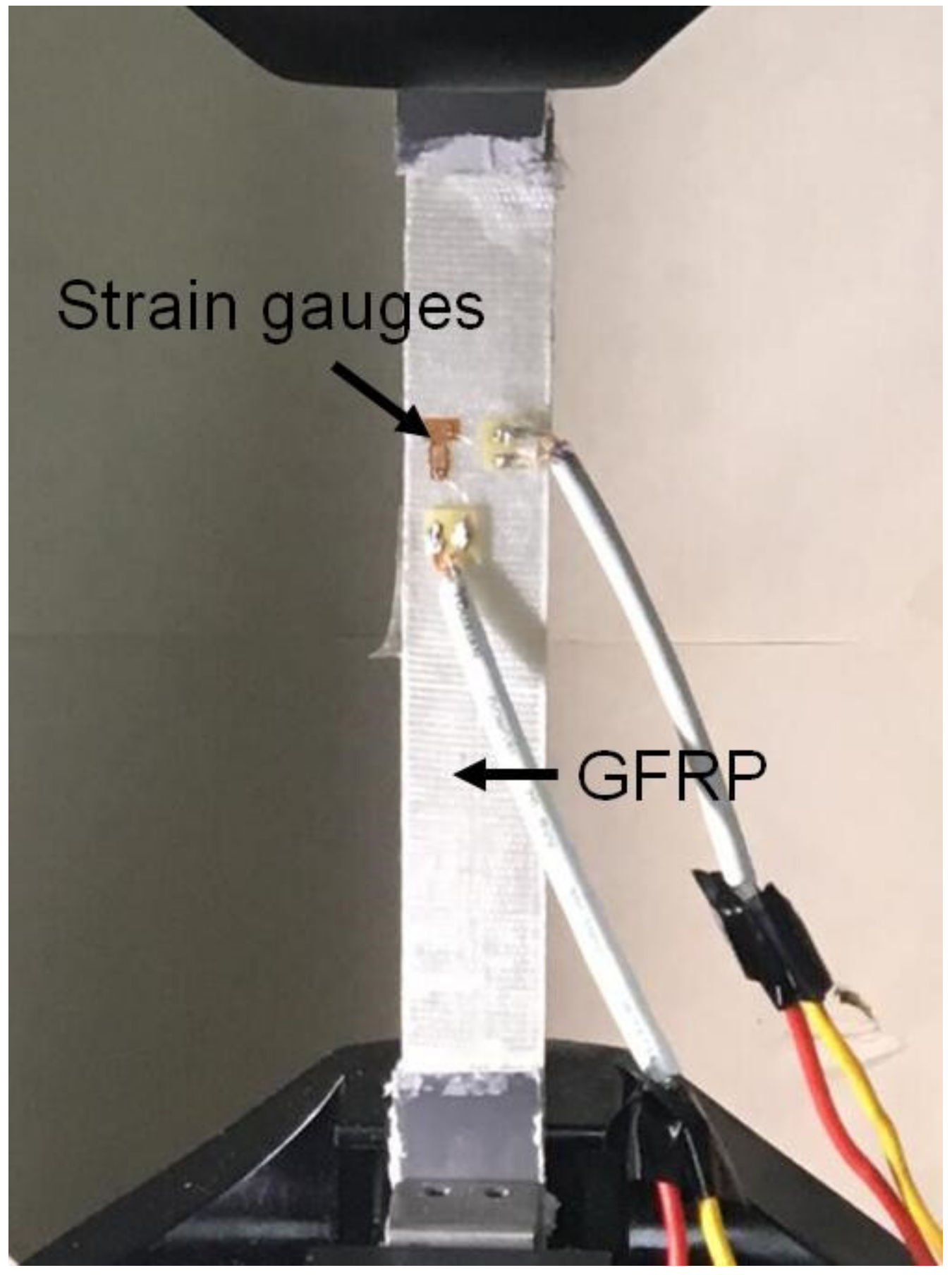
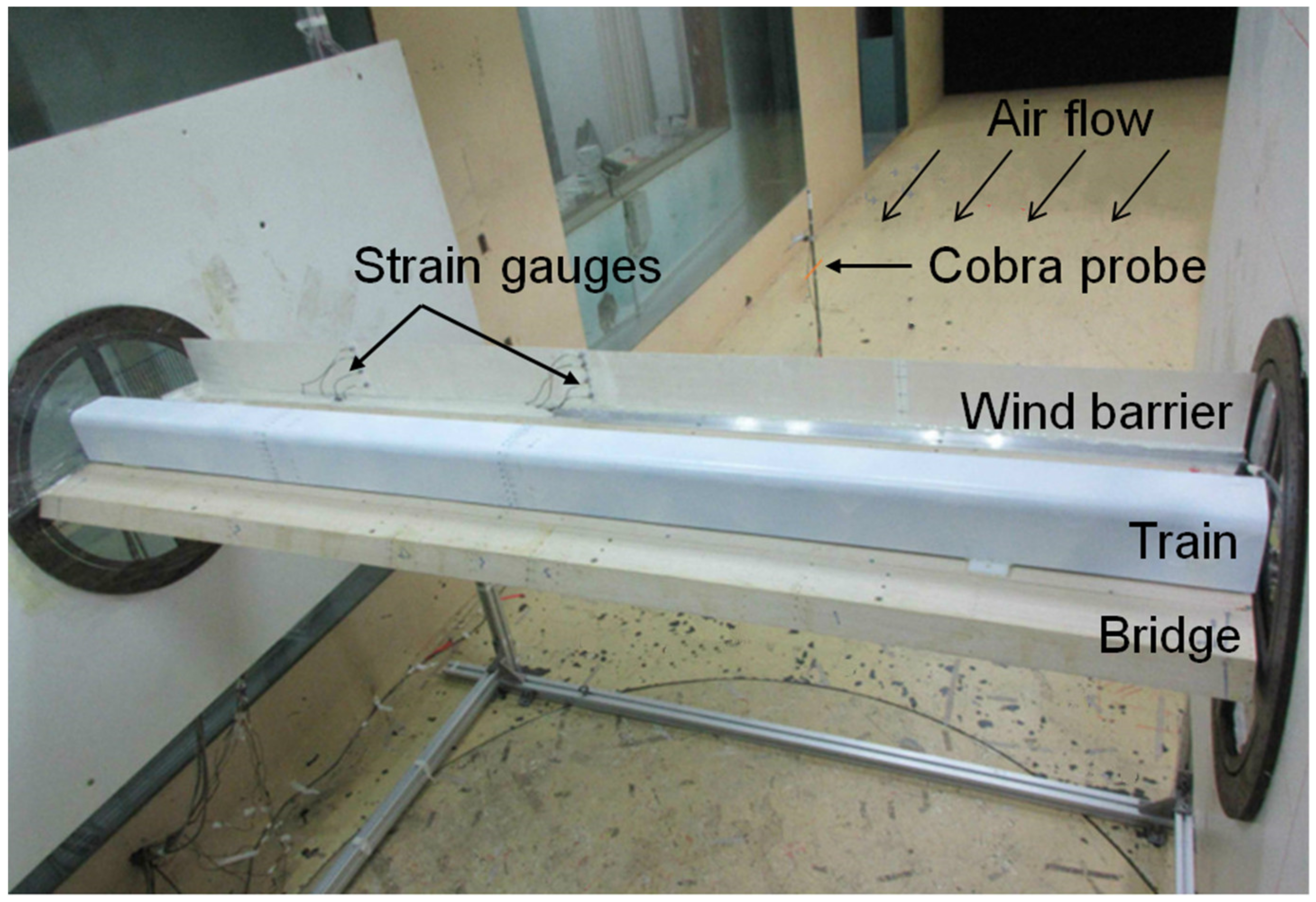
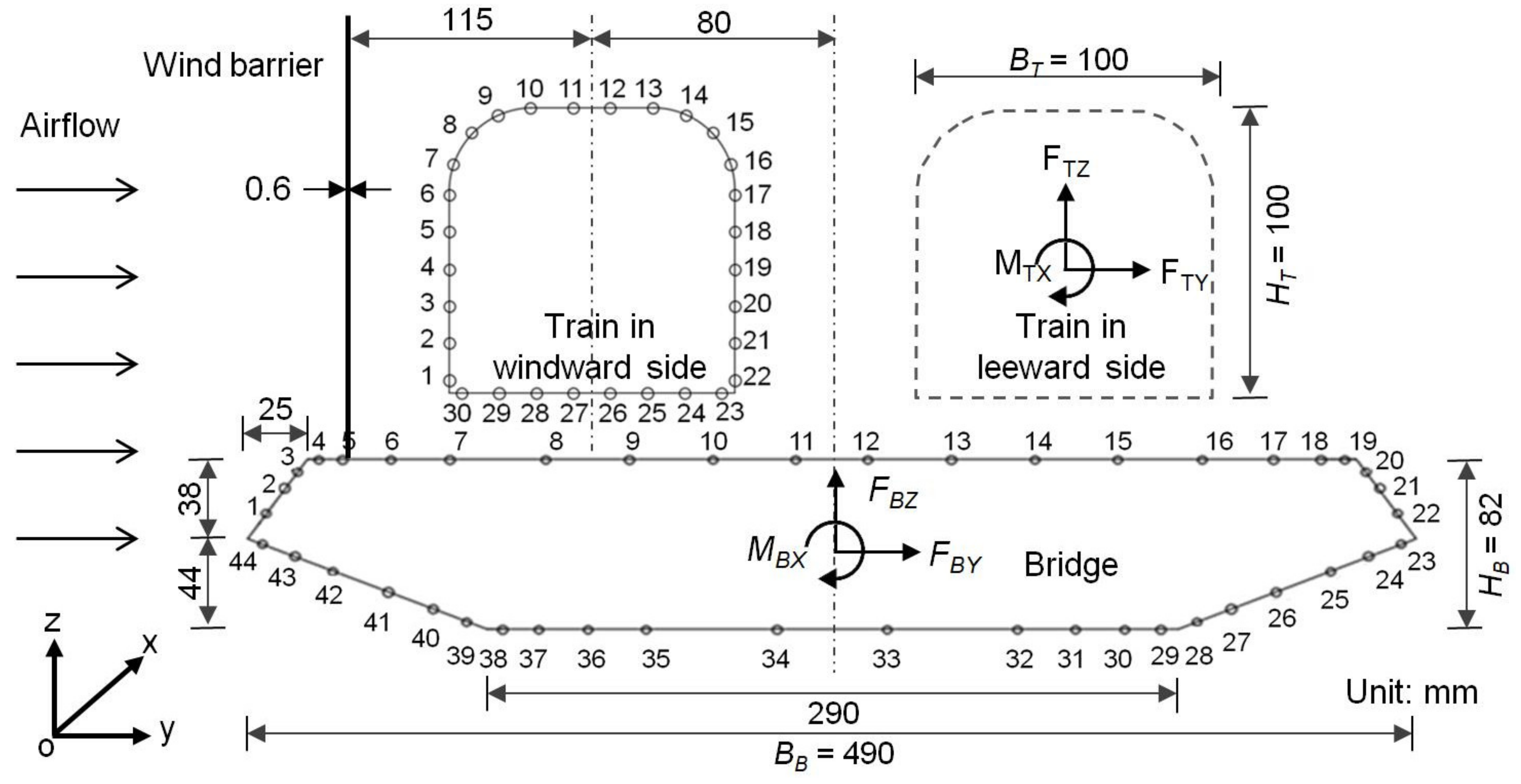
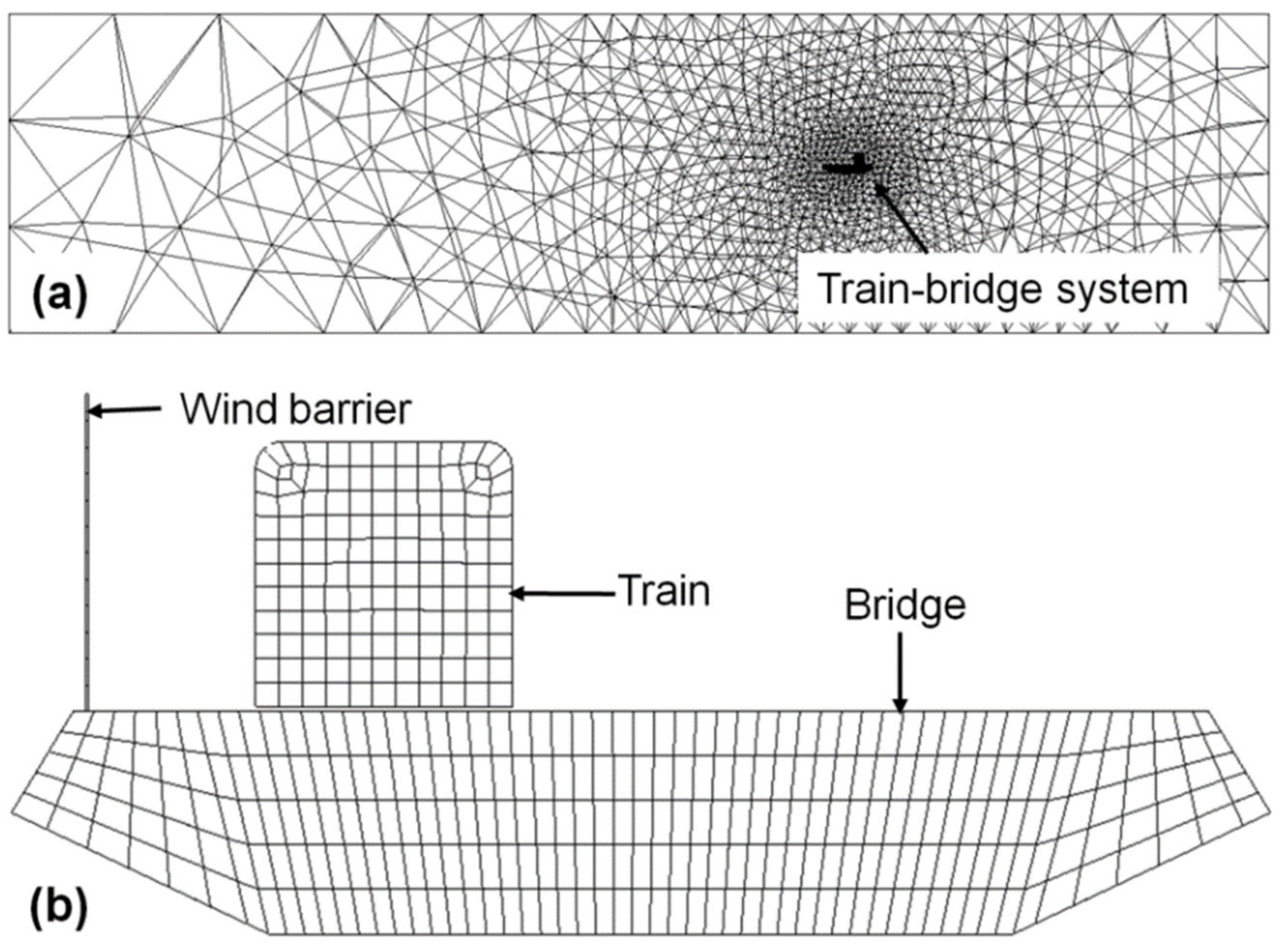

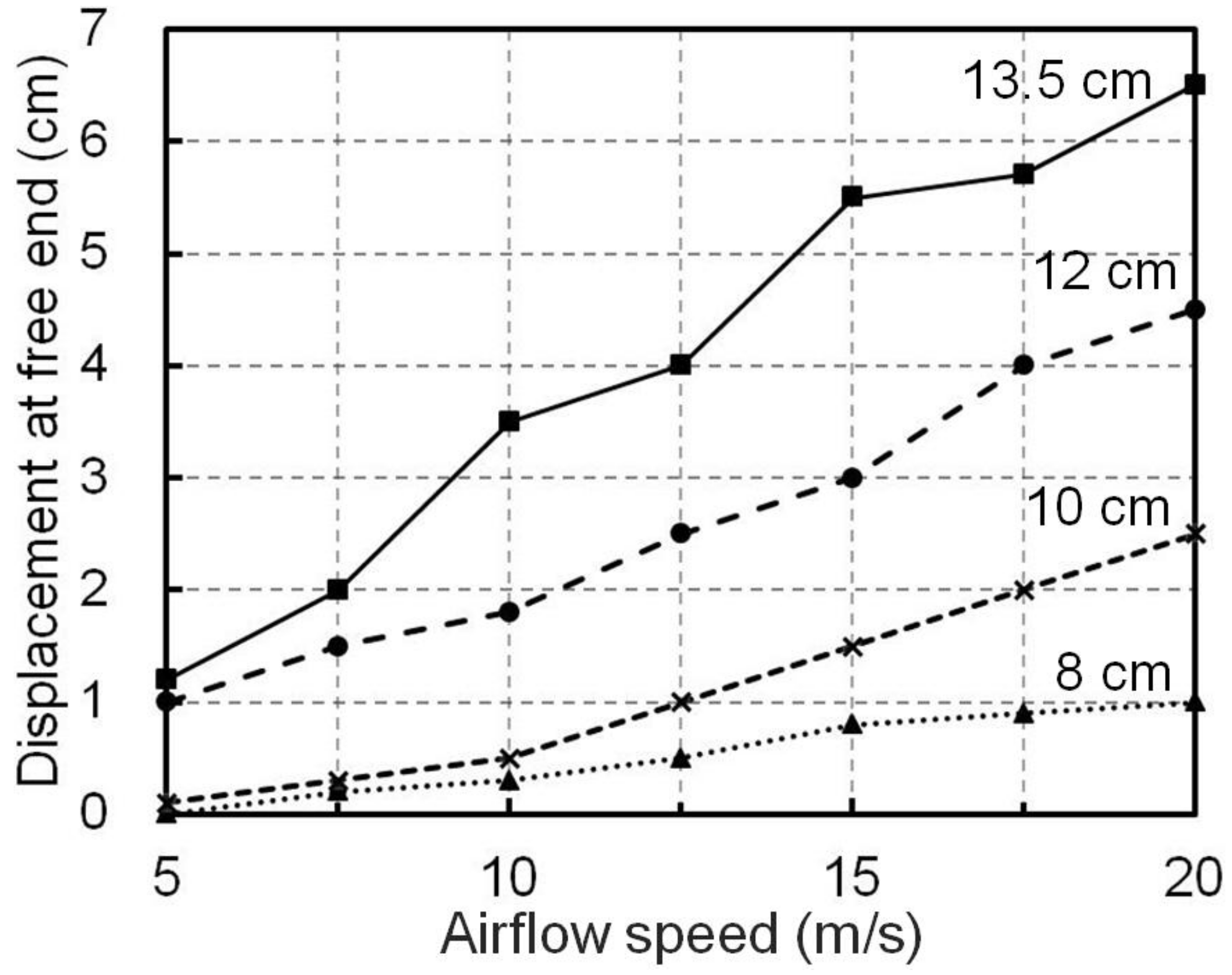

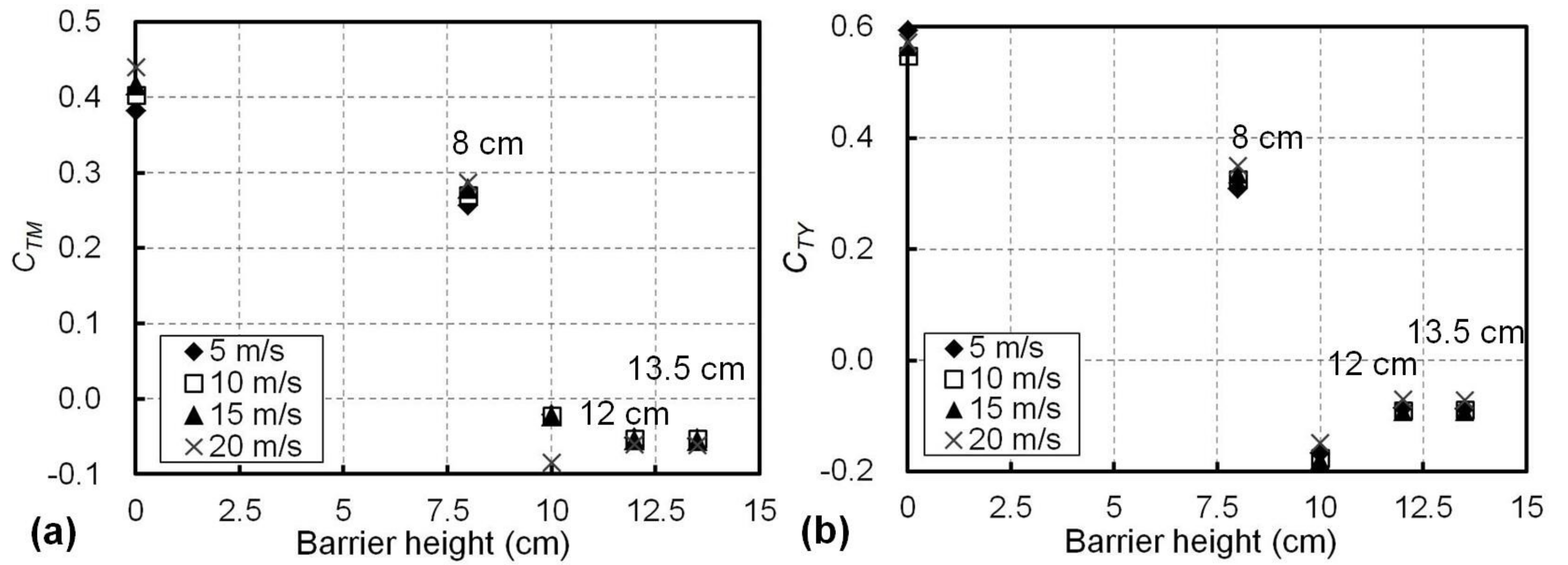


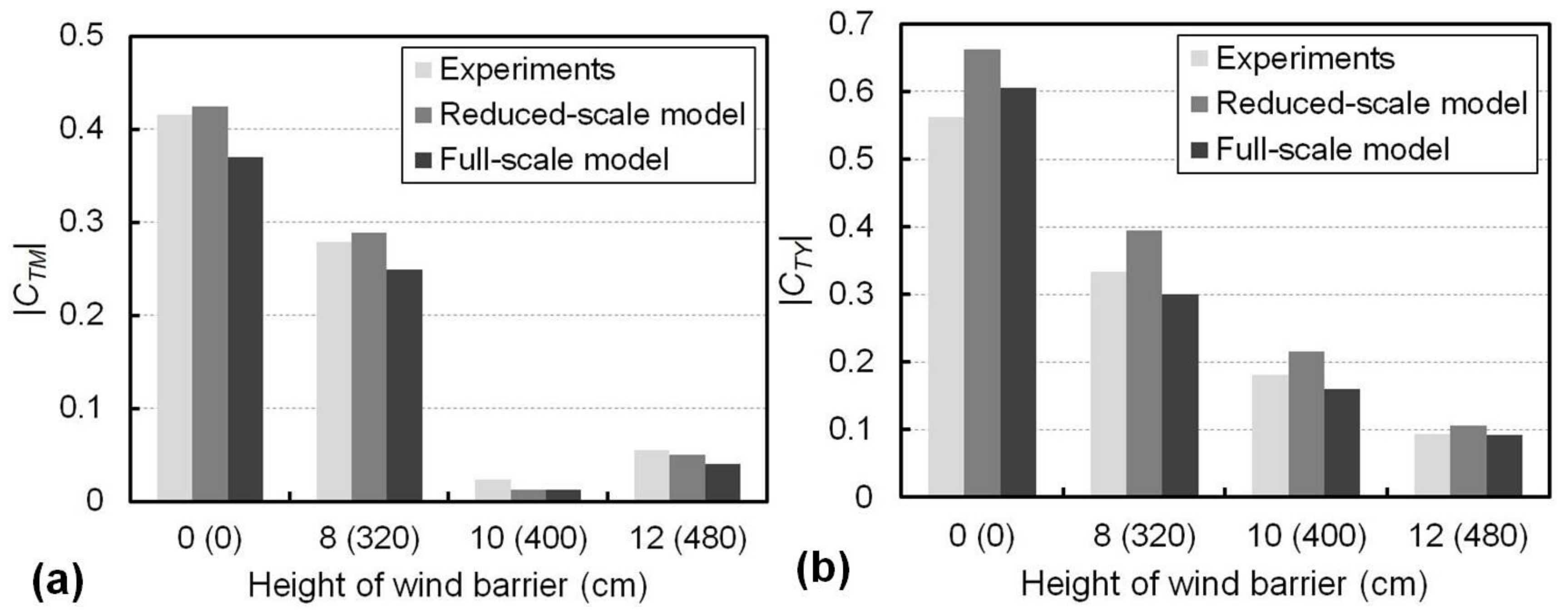

| Aerodynamic Coefficient | Fence-Type | Grid-Type | Louver-Type | Present Research |
|---|---|---|---|---|
| Moment Coefficient, CBM | 1.13 | 1.13 | 0.49 | 0.93 |
| Side-force Coefficient, CBY | 0.29 | 0.31 | 0.16 | 0.18 |
© 2020 by the authors. Licensee MDPI, Basel, Switzerland. This article is an open access article distributed under the terms and conditions of the Creative Commons Attribution (CC BY) license (http://creativecommons.org/licenses/by/4.0/).
Share and Cite
Dai, Y.; Dai, X.; Bai, Y.; He, X. Aerodynamic Performance of an Adaptive GFRP Wind Barrier Structure for Railway Bridges. Materials 2020, 13, 4214. https://doi.org/10.3390/ma13184214
Dai Y, Dai X, Bai Y, He X. Aerodynamic Performance of an Adaptive GFRP Wind Barrier Structure for Railway Bridges. Materials. 2020; 13(18):4214. https://doi.org/10.3390/ma13184214
Chicago/Turabian StyleDai, Yiqing, Xuewei Dai, Yu Bai, and Xuhui He. 2020. "Aerodynamic Performance of an Adaptive GFRP Wind Barrier Structure for Railway Bridges" Materials 13, no. 18: 4214. https://doi.org/10.3390/ma13184214
APA StyleDai, Y., Dai, X., Bai, Y., & He, X. (2020). Aerodynamic Performance of an Adaptive GFRP Wind Barrier Structure for Railway Bridges. Materials, 13(18), 4214. https://doi.org/10.3390/ma13184214







